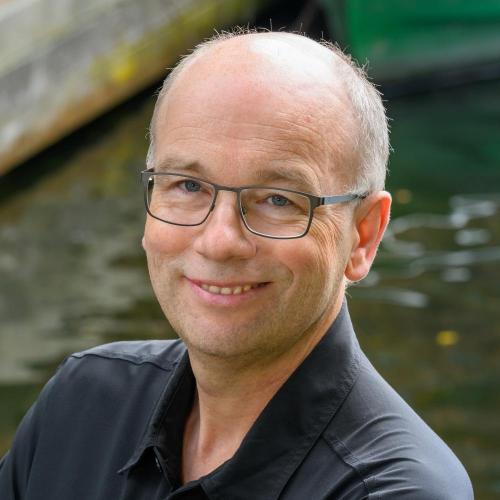
Sampling devices for pore water called "pushpoints" in the sediment of the side channel of the Erpe, a watercourse in Berlin. I Photo: Birgit Müller
The streambed, where stream water and groundwater mix, is called hyporheic zone – a bioreactor that is largely responsible for the impressive self-purification capacity of running waters. Organic substances are broken down in this zone by microorganisms.Birgit Müller has investigated the fate of trace organic compounds in water bodies in Jörg Lewandowski's research group. "We know the importance of the hyporheic zone for the biogeochemical turnover of organic matter. Until now, however, little was known about the simultaneous turnover of organic matter and trace organic compounds", said Birgit Müller.
At 25 centimetres, mean concentrations of trace substances decrease to almost half
In fact, in a field study on a small stream in Berlin, the team showed that the interface at the bottom of the stream is highly effective in degrading trace organic compounds. The attenuation per metre of flow distance was significantly higher in the hyporheic zone than in the surface water; the mean concentrations of the trace organic compounds decreased on average 11.7 % along the 850 metres long flow path in the surface water – and by 49.4 % over 0.25 metres in the hyporheic zone. However, the degradation differed considerably depending on the compound. The concentration of the rust inhibitor methylbenzotriazole, for example, decreased by almost 30 %, that of the antidepressant venlafaxine by about 94 %. The attenuation of trace organic compounds was accompanied by a decrease in the molecular diversity of easily biodegradable dissolved organic compounds. "This suggests similar or linked degradation pathways of both compound groups in the hyporheic zone", Birgit Müller explained.
A near-natural riverbed supports the degradation of trace organic compounds
At the river studied, only a small proportion of the river water enters the hyporheic zone. Factors that promote exchange at this interface are, for example, an unobstructed riverbed and structures made of dead wood or large stones. This creates areas where surface water is pushed into the sediment. In general, a shallow, wide, freely meandering stream with a sandy to gravelly streambed is better than a channel with a comparatively small sediment surface and a muddy streambed.
"A near-natural, intact streambed which enables an intensive exchange between stream water and the hyporheic zone helps to mitigate the loads of trace organic compounds", concluded Jörg Lewandowski.




